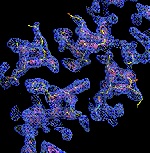This may come as surprise, but despite a history which extends thousands of years into the past when South American indigenous peoples would chew on the leaves of the Erythroxylon Coca for “strength and energy”, one could very easily deduce that there is little we actually know about the effects of the “rich mans” drug, cocaine.
Abused by over 2 million Americans in its various forms—powder, rock, leaves—cocaine use and addiction is known to cause depression, dysphoria, anxiety, psychological and physical weakness, and kidney diseases. And then, of course, there’s sudden death. But these are surface observations, symptoms which can easily be determined because of the physical and mental wear and tear that addiction to cocaine can have on an individual.
Researchers are trying to find out more; when prescription and over-the-counter meds go through the process of being approved by the FDA for legal consumption, they must undergo a series of tests to determine short and long-term side effects. This is not the case, understandably, for illicit drugs. However, there are other ways to get answers.
Thanks to a new study conducted by Anthony P. DeCaprio and colleagues at the Florida International University, a completely heretofore unknown method by which cocaine breaks down and alters proteins in the body has been discovered. You’re probably wondering to yourself, “big deal”, right? According to a recent press release posted by the American Chemical Society, researchers already knew that cocaine abuse can alter proteins in the body, but the exact details of how it makes these changes were not known. The reason why this discovery is so crazy is because, while in the past cocaine abuse was only detectable for up to a couple of days after use, the newly discovered alterable proteins actually appear in users’ biofluids (e.g. saliva, sweat, tears, urine, and blood) for weeks or even months after.
You know what’s coming next. With further research, future drug tests that can out these proteins may very well have a nice percentage of those 2 million abusers on the chopping block, whether at your place of work, professional career, or home life. On a lighter note, these new details on cocaine metabolism within the body could very well serve to help researchers expand on our knowledge of the drug’s toxic effects.








